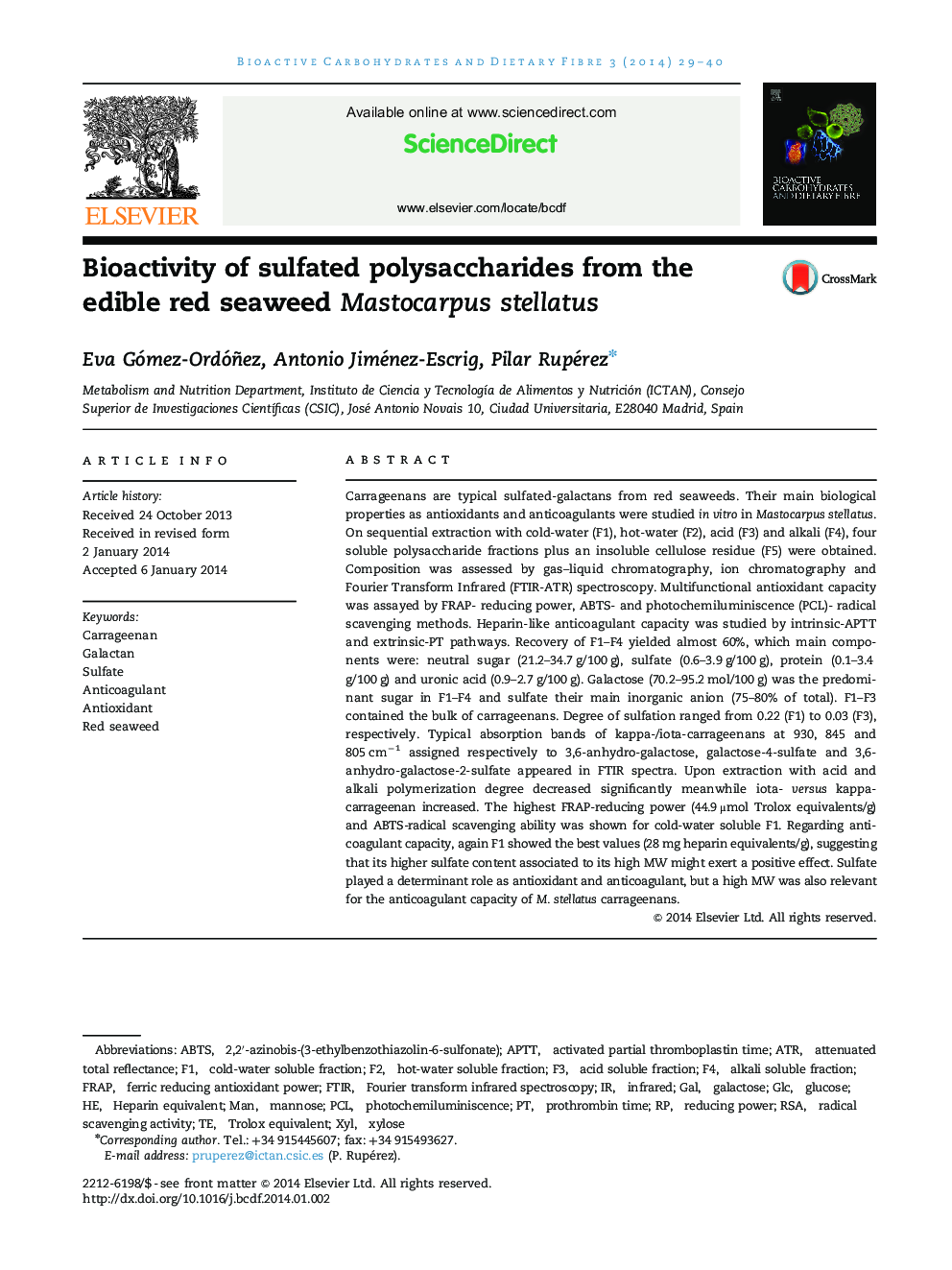| Article ID | Journal | Published Year | Pages | File Type |
|---|---|---|---|---|
| 1413020 | Bioactive Carbohydrates and Dietary Fibre | 2014 | 12 Pages |
•Carrageenans from M. stellatus show antioxidant and anticoagulant capacity in vitro.•Molecular weight decreases after polysaccharide extraction with acid and alkali.•Ratio of iota- versus kappa-hybrid increases with alkali treatment of red seaweed.•F1, cold-water soluble galactans have the highest sulfate and polymerization degree.•F1 exhibits the best reducing power, radical scavenging and anticoagulant ability.
Carrageenans are typical sulfated-galactans from red seaweeds. Their main biological properties as antioxidants and anticoagulants were studied in vitro in Mastocarpus stellatus. On sequential extraction with cold-water (F1), hot-water (F2), acid (F3) and alkali (F4), four soluble polysaccharide fractions plus an insoluble cellulose residue (F5) were obtained. Composition was assessed by gas–liquid chromatography, ion chromatography and Fourier Transform Infrared (FTIR-ATR) spectroscopy. Multifunctional antioxidant capacity was assayed by FRAP- reducing power, ABTS- and photochemiluminiscence (PCL)- radical scavenging methods. Heparin-like anticoagulant capacity was studied by intrinsic-APTT and extrinsic-PT pathways. Recovery of F1–F4 yielded almost 60%, which main components were: neutral sugar (21.2–34.7 g/100 g), sulfate (0.6–3.9 g/100 g), protein (0.1–3.4 g/100 g) and uronic acid (0.9–2.7 g/100 g). Galactose (70.2–95.2 mol/100 g) was the predominant sugar in F1–F4 and sulfate their main inorganic anion (75–80% of total). F1–F3 contained the bulk of carrageenans. Degree of sulfation ranged from 0.22 (F1) to 0.03 (F3), respectively. Typical absorption bands of kappa-/iota-carrageenans at 930, 845 and 805 cm−1 assigned respectively to 3,6-anhydro-galactose, galactose-4-sulfate and 3,6-anhydro-galactose-2-sulfate appeared in FTIR spectra. Upon extraction with acid and alkali polymerization degree decreased significantly meanwhile iota- versus kappa-carrageenan increased. The highest FRAP-reducing power (44.9 μmol Trolox equivalents/g) and ABTS-radical scavenging ability was shown for cold-water soluble F1. Regarding anti-coagulant capacity, again F1 showed the best values (28 mg heparin equivalents/g), suggesting that its higher sulfate content associated to its high MW might exert a positive effect. Sulfate played a determinant role as antioxidant and anticoagulant, but a high MW was also relevant for the anticoagulant capacity of M. stellatus carrageenans.
Graphical abstractFigure optionsDownload full-size imageDownload as PowerPoint slide
